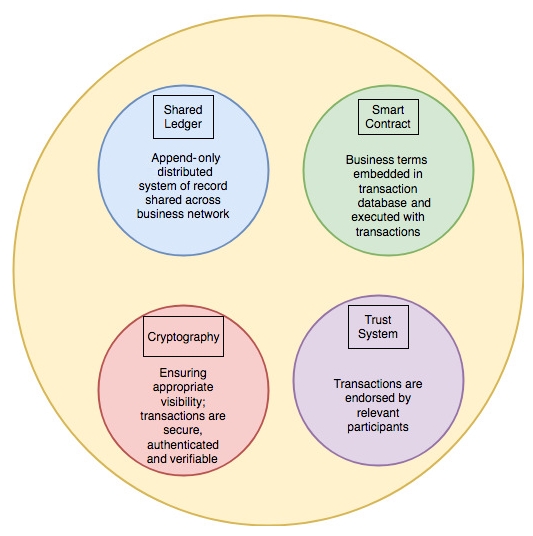Blockchain frameworks typically include the following four building blocks:
- A shared ledger: The shared ledger appends only the distributed transaction record. Bitcoin blockchain was designed with the intent to democratize visibility; however, with blockchain, consumer data regulations also need to be considered. Using a properly configured SQL or noSQL distributed database can achieve immutability, or append-only semantics.
- Cryptography: Cryptography in a blockchain ensures authentication and verifiable transactions. Blockchain design includes this imperative because of the focus on assuming computational hardness and making encryption harder for an adversary to break. This is an interesting challenge with bitcoin blockchain because of the economic incentive and its system design. When you're working in a less democratic or permissioned business ledger network, considerations around cryptography change.
- Trust systems or consensus: Trust systems refer to using the power of the network to verify transactions.
Trust systems are central to blockchain systems in my view; they are at the heart of blockchain applications, and we believe trust system is the preferred term over consensus system since not all validation is done through consensus. This foundational element of trust dictates the overall design and investment in a blockchain infrastructure. With every new entrant in the blockchain space, the trust system is modified, forming variations that are specialized for specific blockchain use cases. Trust, trade, and ownership are staples of blockchain technology. For inter-company transactions, the trust system governs transactions for trade between participating companies.
Much work still needs to be done to define the best trust system for specific use cases, such as P2P and sharing economy models with B2B models.
- Business rules or smart contracts: Smart contracts are the business terms that are embedded in a blockchain transaction database and executed with transactions. This is also the rules component of a blockchain solution. It is needed to define the flow of value and state of each transaction.
The following use diagram gives a good idea of these concepts:

The four building blocks are generally accepted and well understood. They have existed for decades prior to blockchain. Shared ledgers are an evolutionary change, similar to the move to computer-based spreadsheets, but the underlying business rules have stayed the same.
